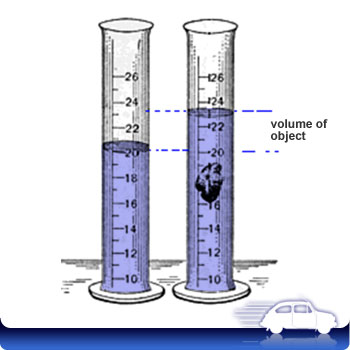I need help with this question: "A piece of zinc-copper alloy weighs 25 g. It was placed into a graduated cylinder and the volume of the water is increased by 3.2 mL. What is the density of the alloy?"
I don't know how to find the original amount of mL the water was at before the zinc-copper alloy was placed into the graduated cylinder.
I do know that 1 mL = 1 #cm^3# though.... and that Density = Mass/Volume.
I just need help with the volume part (using water displacement method to subtract the difference in the graduated cylinder (3.2 mL) by the original volume ( ? mL)) which is the part I need help in finding original volume :(
I don't know how to find the original amount of mL the water was at before the zinc-copper alloy was placed into the graduated cylinder.
I do know that 1 mL = 1
I just need help with the volume part (using water displacement method to subtract the difference in the graduated cylinder (3.2 mL) by the original volume ( ? mL)) which is the part I need help in finding original volume :(
1 Answer
Explanation:
The trick here is to realize that the volume of the alloy is equal to the volume of water it displaces when placed in the graduated cylinder.
In other words, the difference between the volume of water before you add the piece of alloy and the volume of the water + piece of alloy must be equal to the volume of the alloy.
#overbrace("volume of (water + alloy)")^(color(blue)("after you add the aloy")) = overbrace("volume of water")^(color(blue)("before you add the alloy")) + "volume of alloy"#
Hence
#"volume of alloy" = "volume of (water + alloy") - "volume of water"#
Therefore, you don't need to know the initial volume of water present in the cylinder or the final volume that you get after adding the alloy, all you need to know is the difference between the two.
In your case, this difference is equal to
At this point, all you need to know to figure out the density is divide the mass of the alloy by its total volume
#"density" = "25 g"/"3.2 mL"#
#= 25/3.2 color(white)(.)"g" * overbrace(1/"1 mL")^(color(blue)(="mL"^(-1))) = color(darkgreen)(ul(color(black)("7.8 g mL"^(-1))))#
The answer must be rounded to two sig figs.


